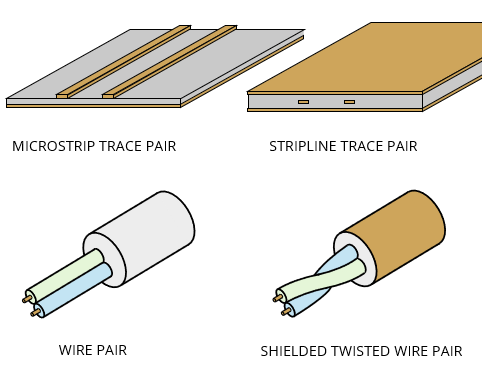EMC Question of the Week: June 13, 2022

In a balanced transmission line, both signal conductors have the same
- voltage
- current
- cross-section
- impedance to ground
Answer
The correct answer is “d.” By definition, both conductors in an electrically balanced transmission line have the same impedance to ground. Two conductors with the same cross-section do not necessarily form a balanced transmission line. For example, two identical circuit board traces are not balanced if they are vertically stacked above a ground plane.
Also, electrical balance is not determined by the voltages or currents on the conductors. The voltages and currents on balanced transmission line conductors carrying common-mode and differential-mode signals are not the same. While in some situations, the voltages or currents on the conductors of unbalanced transmission lines might be the same.
For the purposes of defining electrical balance, "ground" can be a nearby conducting surface or it can be infinitely far away. The definition of common-mode current depends on the choice of ground. For differential signal traces on a circuit board, "ground" is usually a copper plane above and/or below the traces. In a shielded twisted wire pair, "ground" is usually the cable shield. In these cases, common-mode current returns on the ground and does not result in significant radiated emissions. On the other hand, the "ground" of an unshielded twisted wire pair is at infinity. In this case, as little as 5 μA of common-mode current on a one-meter cable can cause a product to exceed CISPR Class B radiated emissions limits.
Have a comment or question regarding this solution? We'd like to hear from you. Email us at
